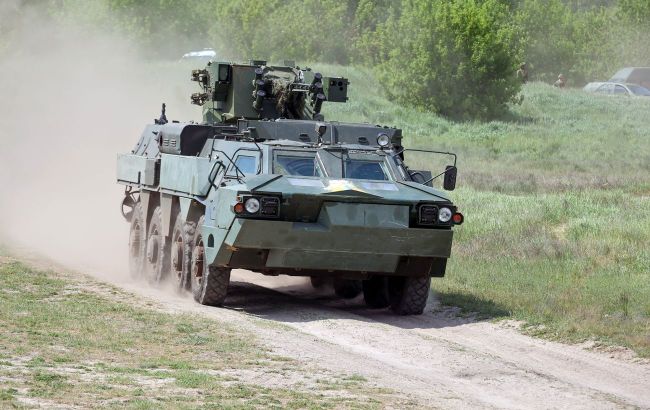Moscow ramps up BTR-82 production: 700 vehicles a year now rolling off line
 Russia is mass-producing BTR-82 armored personnel carriers (Illustrative photo: Getty Images)
Russia is mass-producing BTR-82 armored personnel carriers (Illustrative photo: Getty Images)
Russia has sharply increased production of the BTR-82, resuming mass manufacturing of Soviet‑style armored vehicles, according to an open-source intelligence (OSINT) analyst operating on platform X under the pseudonym Jompy.
Russia has established serial production of BTR-82 armored personnel carriers, with output potentially reaching up to 700 units per year.
This is evidenced by observations of equipment losses on the front: BTR-82s are increasingly recorded among destroyed Russian vehicles, indicating their widespread deployment.
At the same time, older BMP-1 infantry fighting vehicles have almost completely disappeared from loss reports. According to the analyst, claims that the Russian army is refurbishing old BTR-80s are unlikely.
"Russia keeps manufacturing BTR-82s and at a steady rate, they just have to look at the constant number of destroyed BTR-82," notes Jompy. He added that the country is capable of producing 500 to 700 BTR-82s annually from scratch, reflecting large-scale militarization of the economy.
Specifications and Capabilities of the BTR-82
The BTR-82 is a wheeled armored personnel carrier based on the Soviet BTR-80 but extensively modernized.
The vehicle is used for transporting motorized rifle units, providing fire support, and conducting reconnaissance operations. Serial production began in 2011, but in recent years, output has significantly increased.
Key improvements over the previous model include a reinforced engine and transmission, enhanced armor protection, a modern targeting and navigation system, and upgraded armament.
The BTR-82 can cross water obstacles without additional preparation, and its new hull design allows troops to disembark through rear doors, increasing survival chances under fire.
The vehicle is equipped with protection against small arms and shrapnel and allows for the installation of additional anti-fragmentation panels.
However, the APC is not designed for prolonged engagements with modern tanks or anti-tank weapons.
Meanwhile, following Russia’s statements about readiness to use the Poseidon torpedo, the US announced plans to conduct nuclear weapons tests for the first time in many years, a move experts interpret as a return to a new Cold War atmosphere.
Additionally, the Netherlands has decided to provide Ukraine with extra funding to develop and protect its digital infrastructure, strengthening support in the field of cybersecurity.

